|
The numbers 3, 5, and 7 are significant in the Craft, as is evident from the
dramatic manner in which these numbers are brought to the attention of a
Fellowcraft Mason during the ritual of the Degree. It has always been
interesting to me that beyond the literal explanation provided during that
Degree, very little is presented thereafter regarding any possible metaphoric or
symbolic use of this numerical progression. In fact the only memory I have of
further formal reference to, or use of, the numbers 3, 5, and 7 is for certain
applause cadences associated with Scottish Rite ritual.
Since
much of the symbolism of Freemasonry deals with geometry or geometric
construction, it seemed reasonable to me that there may be subtle meaning
contained in the numerical sequence 3, 5, and 7 which might only be brought to
light by examining the numbers in a Geometrical context. As will be demonstrated,
one method for the geometric representation of the numbers 3, 5, and 7 is in the
form of intersecting circles . This approach produced an astonishingly simple
proof of Euclid’s 47th Proposition. It would appear that Euclid’s
famous theorem pops up with surprising regularity in Freemasonry. This is
perhaps no surprise since Euclid’s 47th Proposition is regarded as
foundational to the understanding of the mysteries of Freemasonry.
This
paper will present a detailed account of how the numbers 3,5, and 7 when
translated into a diagram of intersecting circles resulted in a proof of
Euclid’s 47th Proposition. Interestingly, I developed
this proof, then discovered through additional research that an identical
proof has already been established by a 14 year old girl from Iran[i]
(Miss Sina Shiehyan from Sabzevar, Iran), using an identical figure or diagram,
but developed by methods which did not involve either circles or the numbers 3,
5, and 7 (talk about ego deflation). Consequently I make no claims for having
originated the proof, but present it here for the sole reason that it is based
upon a numerical progression and unique geometric representation which is of
interest to the Craft.
Geometric
Representation
During
the preparation of this article, a number of different approaches were taken (including
arrangements based upon The Lune of Hippocratus, and Three Co-Tangent Circles,
neither of which worked), to represent the numerical progression 3, 5, and 7 in
geometric form. Of these approaches,
the one which appeared most interesting to me was one in which the numbers in
the sequence were made to represent circles having a diameter equal to their
numerical value. I felt it was important to arrange the circles in such a manner
that the progression of the numbers was maintained (i.e.
3 + 0, then 3 +2, then 5 + 2). In this progression each number increases
by two relative to the sum of the two preceding numbers. It’s interesting to
note that the number one (1) is not included in this sequence, even though it
clearly fits into the pattern (1 + 0 = 1, 1 + 2 = 3, 3 + 2 = 5, 5 + 2 = 7). The
fact that the number 1 is absent from our Masonic sequence was puzzling. One
possible reason is that in a linear progression of numbers, only three are
necessary to establish that the progression is indeed linear. For example, when
plotting a graph, if the alignment of any three points on that graph may be
connected with a common straight line, then the plotted values represented by
these points are linear. The slope of the straight line connecting these points
is constant at any point along it’s length. Figure 1 is the representation of
the circles having proportions of 3, 5, and 7 which I have described. The
progression in the diameter of each circle is represented by the method in which
the circles overlap, with the constant increase in each successive diameter
depicted by the uniform spacing between the circle centers. This representation
also captures the fact that the numbers 3 and 7 when added total 10; and that 5
is the mathematical mean or average of the sum of these two numbers.
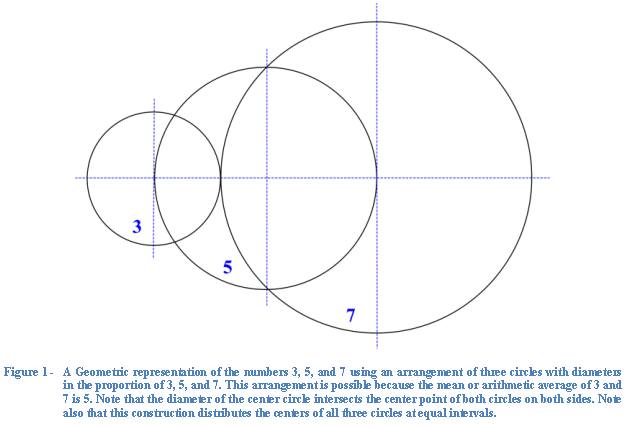
Development
of the Figure of Proof
Since
the relationship between the diameter of these circles is linear, I am able to
construct a straight line which is simultaneously tangent to all three circles
(Figure 2). In Figure 2 the tangent
line is represented by line AB. Lines have been drawn from the center of each
circle (the centers are labeled as points F, G, and H) to points perpendicular
to tangent line AB where it intersects each circle. These points of tangency are
labeled C, D, and E respectively. Notice that all three lines are parallel to
one another and that they pass through their point of tangency at the same
angle. Although not shown in the figure, extension of line AB to the left of the
first circle would eventually result in the tangent line intersecting the blue
dotted line which depicts the common diameter and horizontal centers of the
three circles. This would represent the origin or convergence point of the
progression. An infinite number of circles, each successively decreasing in size,
but maintaining the proportions 3, 5, and 7 (and overlapped exactly like those
shown in the figure) would fit perfectly at tangent points between these two
converging lines. There are many highly interesting geometric and mathematical
properties represented here, however it is beyond both the scope and focus of
this article to delve into these.
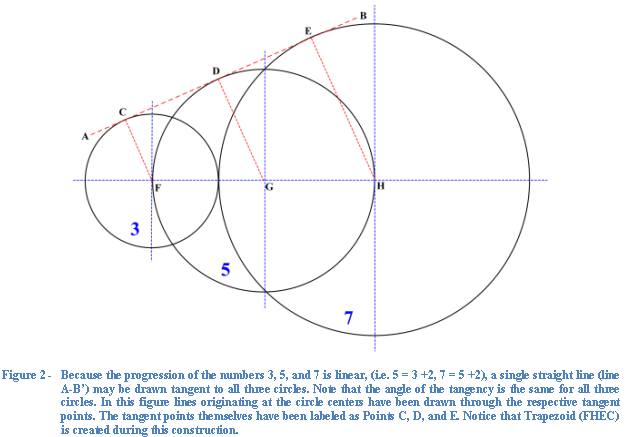
In
Figure 3 we have constructed line DN which is perpendicular to line FH and which
is also tangent to both the first circle and center circle at point N.
A right triangle (FHD) has been inscribed in the center circle (based
upon the Theorem of Thales[ii]
triangle FHD is a right triangle) with the vertex of the right angle at point D
(the point at which AB is tangent to the center circle). This divides trapezoid
FHEC into three similar right triangles FDC, HED, and FHD.
In addition, line DN divides the larger triangle FHD into two smaller
right triangles, FND and HND. Note that triangles HED and HDN are congruent (identical)
and that triangles FCD and FND are also congruent.
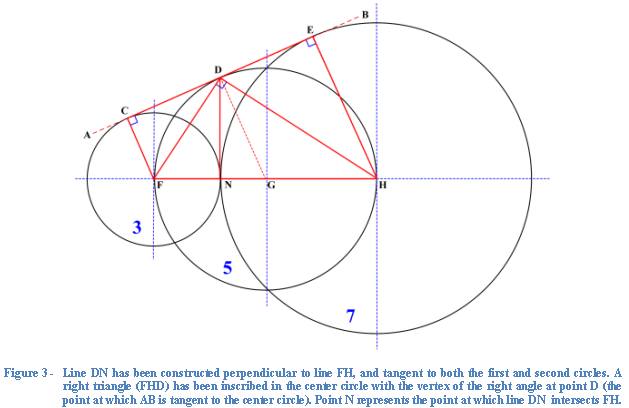
Figure 3 provides an excellent opportunity for a glimpse of the proof.
Notice that triangle FCD and triangle HED may both be “folded” down onto the
triangle FHD (along lines FD and HD respectively) so that they
exactly coincide with triangles FND and HED, completely filling the area
represented by triangle FHD.. This
obviously means that the area of the two triangles FCD and HED when added
together equal the area of the larger triangle FHD.
Therefore, we can state that two times the area of triangle FHD will
equal the area of trapezoid FHEC which is composed of the three triangles. The
proof is predicated upon this principle.
Demonstration
of Proof
Before
beginning the demonstration of proof I would like to offer a short comment
concerning the Pythagorean Theorem (aka Euclid’s 47th Proposition)
which may assist some readers in understanding how and why the proof works. The
Pythagorean Theorem establishes that in a right triangle the square of the
length of the hypotenuse of that triangle will equal the square of the sums of
the lengths of the other two sides. We state this mathematically as c2 =
a2 + b2 in which c is the hypotenuse and a and b are the
other two sides.
Although
we identify the Pythagorean Theorem with the calculation of the length of the
sides of a right triangle, its basis of proof is actually in the calculation of
areas. The Pythagorean Theorem may
be rewritten to state that the sum of the area of the squares enclosing two
sides of a right triangle will equal the area of the square forming the
hypotenuse of that triangle. One figure often used to establish the proof of this restated
version of the Pythagorean Theorem is provided by Figure 4. Consequently, one
method of proof of the Pythagorean Theorem involves demonstrating that the area
of side c2 in a right triangle is equal to the area of some other
polygon (often a trapezoid) in which it is exactly contained. Often, several
right triangles which may be summed to equal the area of a polygon are used to
the same effect.
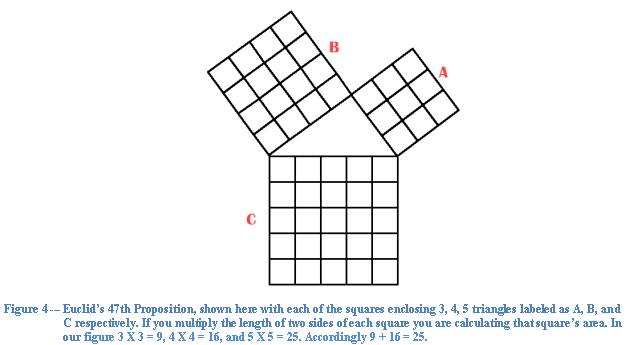
As
previously mentioned, the original proof which I developed is the same as that
developed by Ms. Shiehyan, with the exception that I used slightly different
algebra than she did, and my figure of proof was developed using a different
premise. I will provide both the proof she developed as well as my own, in case
one should happen to be more easily followed than the other (different readers
will have different perceptions). The original proof offered by Ms. Shiehyan is
presented in it’s entirety at the excellent internet website Cut The Knot[iii],
an interactive internet mathematics website containing, among many other things,
a collection of proofs of the Pythagorean Theorem. In addition to being much
smarter than I am, Ms. Shiekhan has far better handwriting than I.
Refer
to the diagram of proof provided by Figure 3. Note that the labeling of my
figure differs from that used by Ms. Shiekhan and I have changed the lettering
of the proof to coincide with the differences. Her proof of Euclid’s 47th
Proposition follows:
·
Area (FDC) + Area (HDE)
= DC * AP/2
+ DE * HE/2 = {BA*
(FC + HE)/2}/2 =Area (FHEC)/2
·
Therefore AREA (FHD) = Area (FHEC)/2
Since
all three right triangles are similar in their areas they are therefore related
as squares of their hypotenuses, which are a, b, and c, respectively. Therefore
a2 + b2 = c2.
QED (Mathematical Latin shorthand meaning End Of Proof).
·
My own version of the proof is a little different. In order to assist the
reader in understanding my method, I have provided Figure 5, which is identical
to Figure 3 in all respects except the labeling. I have used lower case letters
to designate the various sides of the triangle relative to the length of the
various radii of the three circles. As above I compare the summed area of the
triangles to the area of the trapezoid. This method is actually more complex but
provides more algebraic detail.
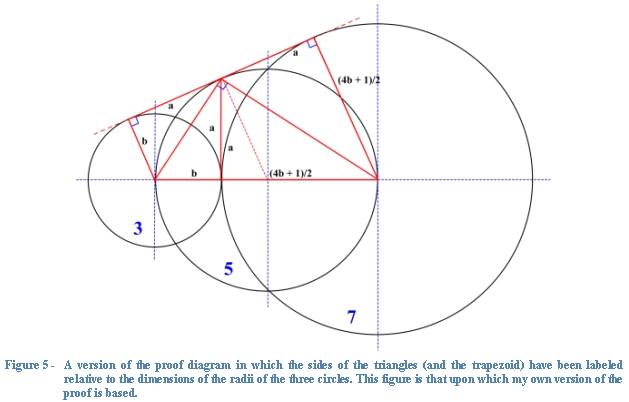
·
Area of the Trapezoid = {(4b
+ 1)/2 + ( b}/2 * 2a = (5b + 1)/2 *a = 5ab + a = 5a (b + 1)/2
·
Area of Large Triangle = Sum of the Area of the Two Smaller Triangles
·
Area of Large Triangle = ab/2 + [a*{(4b + 1)/2}]/2= [{ab/2 + (4ab +
a)/2}]/2 = [{(5ab + a)/2}]/2 = [5a(b+1)/2]/2
·
Area of Trapezoid = Two Times the Large Triangle and,
·
Therefore 2 *[5a(b + 1)/2}]/2 = 5a
(b + 1)/2
·
Hence the Area of the Trapezoid = Twice the Area of the Large Triangle
As
with the previous proof, since all three right triangles are similar in their
areas they are therefore related as squares of their hypotenuses, which are a,
b, and c, respectively. Therefore a2 + b2 = c2.
QED.
Significance
The question of
significance pertains to why the ability to produce a proof of Euclid’s 47th
Proposition using circles having the proportions of 3, 5, and 7 matters or is
even relevant to Freemasonry. The
answer of course depends upon one’s perspective on the Craft. In my own case,
the ability to produce an association with Euclid’s 47th
Proposition is a reminder that Geometry (note the capital G) is everywhere; all
we have to do is look. It is also, I believe, useful to explore our long
established symbols, whether those symbols be text or graphic in nature; without
a thorough understanding gained by such exploration we cannot possibly say that
we understand our Craft. The Fellowcraft Degree in which the numbers 3, 5, and 7
are prominent, is also that in which we are instructed to study the seven
liberal sciences, one of which is Geometry.
Having
said that, I would like to present an interesting situation which I discovered
during the course of my research for this article.
Figure 6 below is a version of the three circles having the proportions
of 3, 5, and 7 similar to that shown in Figure 2; except that in this version I
have drawn two lines tangent to the circles on both as sides (lines AB and AC)
and with both tangent lines and the line representing the common center of the
circles converging at point A.
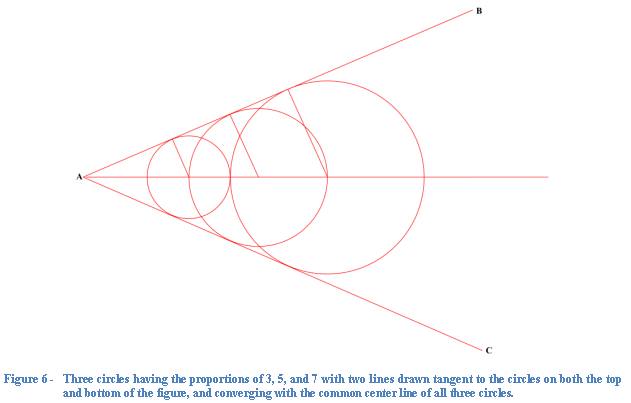
Figure
7 presents this same figure overlaid upon a survey plot[iv]
of the Giza Plateau, home of the great Pyramids of Egypt. Note that when the
center circle is properly aligned and positioned over the center Pyramid, both
the center line and one tangent line intersect at the exact center of the
structure. Note that simultaneously the other (opposite) tangent line points due
North. The point of convergence falls approximately left (right to the reader)
and center of the structure located just in front of the first (small) pyramid.
Further examination of the figure reveals that the line from the center of the
middle circle to the point of tangency coincides with the diagonal of the
pyramid, and also forms one of three similar right triangles.
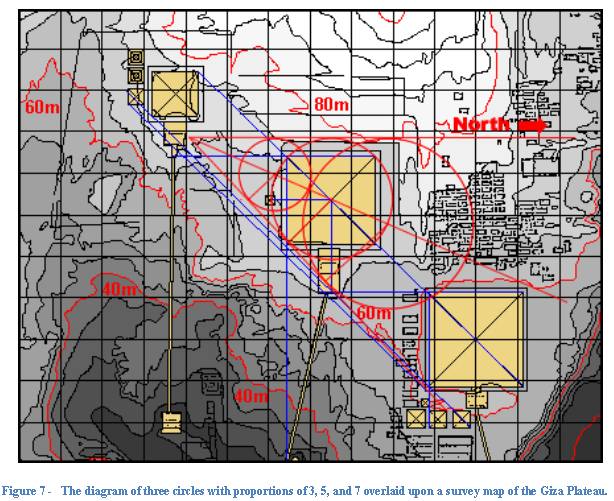
This
is an amazing coincidence, since this use of the figure would permit alignment
of the pyramid to true North and also serve to define the four corners and
diagonals of the structure and locate it’s center. The third (lower structure
in Figure 7) pyramid incidentally may also be aligned when the center circle and
remainder of the figure are moved directly over it. The convergence point in
this case coincides with the small structure in front of the middle pyramid,
almost exactly duplicating the position in which it converged in the first
instance. If this was the surveyor’s vantage point, as this would suggest, it
may be the point where the best unobstructed view was available. When viewing
this figure please take into account small inaccuracies in the construction of
the scaled figure showing the three circles, tangent lines, etc. and the
relatively large scale of the plateau survey.
I
am not suggesting that this is proof that this was the method used to align or
build the great pyramids, nor that the pyramids are connected with Freemasonry.
I think any reader however would agree that the coincidence is startling. As
with many of my articles, I leave it to the reader to draw his own conclusions
in this matter.
[i]
Bogomolny, Alexander. Cut The Knot. http://www.cut-the-knot.org/pythagoras/index.shtml#67.
Accessed July 28, 2007.
[ii]
Morris, Brent S. The Hidden
Secrets of a Master Mason – A Speculation on Unrecognized Operative Secrets
in Modern Masonic Ritual. 1982. http://www.mn-masons.org/assets/2368.pdf.
Accessed May 28, 2007.
[iii]
Bogomolny, Alexander. Cut The Knot.
http://www.cut-the-knot.org/pythagoras/Sina.shtml. Accessed July 28,
2007.
[iv]
Löhner,
Franz and Zuberbühler, Teresa. Building the Great
Pyramid, The Great Pyramid of Khufu (Cheops). , 2007. Source:The Giza Plateau Mapping Project.
The Oriental Institute, University of Chicago.
|
![]() News Feed |
News Feed |  Subscribe News by Email
Subscribe News by Email